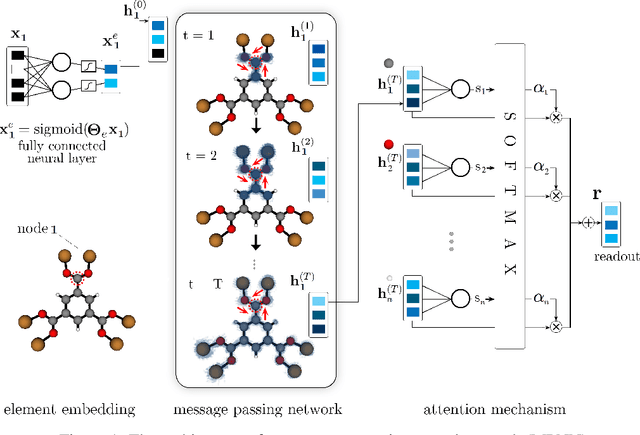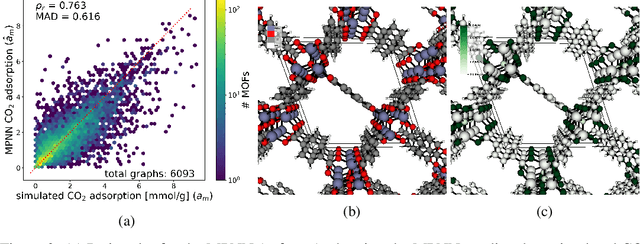Towards explainable message passing networks for predicting carbon dioxide adsorption in metal-organic frameworks
Paper and Code
Dec 02, 2020


Metal-organic framework (MOFs) are nanoporous materials that could be used to capture carbon dioxide from the exhaust gas of fossil fuel power plants to mitigate climate change. In this work, we design and train a message passing neural network (MPNN) to predict simulated CO$_2$ adsorption in MOFs. Towards providing insights into what substructures of the MOFs are important for the prediction, we introduce a soft attention mechanism into the readout function that quantifies the contributions of the node representations towards the graph representations. We investigate different mechanisms for sparse attention to ensure only the most relevant substructures are identified.
* accepted paper at the Machine Learning for Molecules Workshop -
NeurIPS 2020 conference
 Add to Chrome
Add to Chrome Add to Firefox
Add to Firefox Add to Edge
Add to Edge